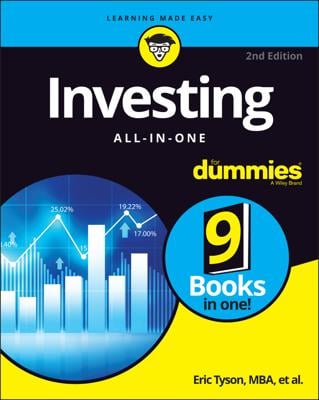The most important document the company and the investment bankers must produce to make an IPO happen is the prospectus. The prospectus lists all the opportunities, risks, and financial details about the company that's selling stock to the public. It's available to investors, regulators, and other interested parties.
Summary
At the top of a prospectus, the investment bankers lay out the main details an investor should be concerned with. Here, in the summary section, investors learn about the company's intentions from the deal. Of most interest to investors is how many shares the company plans to sell and at what price.
In this part of the prospectus, investment bankers also try to demonstrate why the company is looking to sell stock. The summary is also a common place for the company's management team to lay out their broad objectives for the company.
Risk factors
If there is a “cover yourself” section of a prospectus, it's the risk factors area. In this part of the prospectus, the company and its investment bankers warn investors of all the possible things that could go wrong and cause the value of the new stock to crumble.
Although most of the risk factors are boilerplate, you can find some gems in there.
Industry data and other metrics
Because the performance of the industry has such a large bearing on how well a company does, it's a critical aspect of the prospectus. Investors will find a description of the financial measures that are most important in the industry, as well as an outline of how the company going public stacks up.
Use of proceeds
The money being generated by the IPO is for some sort of corporate purpose, and it's in this section of the prospectus that this purpose is revealed to investors.
Normally, a young company going public is raising money because it needs cash to expand and grow. But there are other reasons why a company may go public, including to pay off part of its debt, to purchase another company, or to allow its employees to sell their shares and raise money. It must be outlined in detail here.
IPO investors usually look askance at IPOs where the money raised isn't being used by the company. Investors are especially skeptical when many of the shares being sold in an IPO are being sold by the CEO and other company executives.
Capitalization
The capitalization structure is a description of the types of financing that were used by the company to raise money. The typical company has a blend of forms of financing ranging from bank loans to outstanding bond debt and perhaps preferred stock.
Financial data
Some hard-core financial types skip past many of the sections of the prospectus listed earlier and go straight for this part. Here's where you find the company's financial statements.
Management's discussion and analysis of financial condition
Most investment bankers refer to this important section of the prospectus by its acronym, MD&A. It's in this section of the prospectus that the company's management team, with the help of the investment bank, steps through the financial statements, almost line-by-line, with full description. Any numbers that are a little offbeat or unusually large or small should be detailed in this section.
Business
The business section of the prospectus is the place where the company explains its reason for being. The company often explains the products it makes or the services it provides and why customers deem them worthy to be bought.
Management
In the management section of the prospectus, you find a listing of all the top management team members — usually the chief executive officer (CEO), chief operating officer (COO), chief financial officer (CFO), and the members of the board of directors.
In the management portion of the prospectus, you also find a short biography on all the top people, including their ages.
Executive pay
In this section of the prospectus, investors find out exactly how much executives of a company are being paid.
Reading the executive pay of CEOs can be like trying to solve some kind of financial puzzle. If you just want to get an idea of what the CEO was paid, head for the summary compensation table, where you find each executive listed along with his or her salary, bonus, stock awards, and all other pay listed clearly.
Related-party transactions
Double-dealing is exactly the kind of thing you don't want going on at a company you're looking to invest in. The trouble with IPOs, though, is that many of these companies trace their roots to being practically family business. Many young companies may have complicated business relationships between founders, their families or friends. All these tangled dealings must be highlighted and explained as related-party transactions.
Principal and selling shareholders
When a company seeks to raise money from the public, in an IPO, the rules of disclosure get really strict.
As an investor, you have the right to know who is selling. In some cases, you'll see selling by early investors — often venture capitalists — who want to cash out of the investment. If you see lots of insiders selling, that generally isn't a good sign.
Underwriting
When you're an investment banker, the goal is to be part of the underwriting list on as many IPOs as possible. When a company goes public, it must list all the investment banks and advisors that helped bring the shares to market. For big IPOs, the list can be a long one and is often a who's who of investment banks.
Legal matters
If you want to get sued, one of the best ways to make it happen is to start a business. Most of these suits are nuisances or minor, but periodically outstanding litigation can be significant. This section of the prospectus must outline any pending suits against the company. The company itself usually gives a little bit of commentary on how significant it thinks the litigation is.

